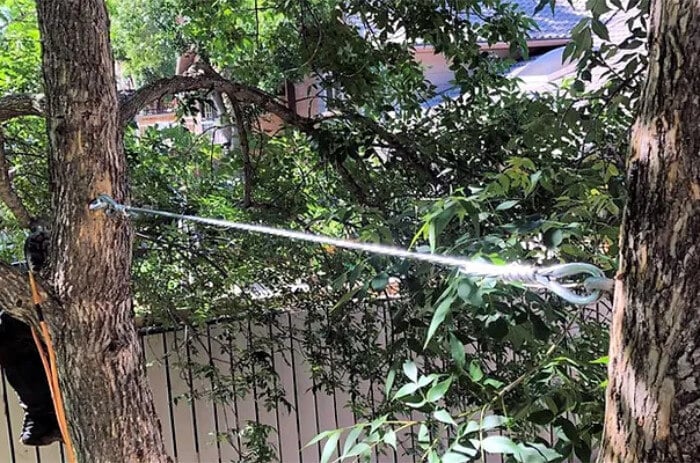
You already know that trees add aesthetic value, provide shade, and contribute to the environment. But did you know that they sometimes need a little help to stay healthy and safe? Yes – even the sturdiest of trees can face structural issues due to aging, diseases, or harsh weather conditions. That’s where tree cabling and bracing come into play. Stick around as we delve into this specialized area of tree care.
The Custom Approach: Not All Trees are Created Equal
When it comes to cabling and bracing, one size most certainly does not fit all. Each tree has its quirks and vulnerabilities, requiring a specialized approach. Our certified arborists perform a thorough evaluation, taking into account the tree’s species, age, and existing structural integrity.
As part of this evaluation, they consider four basic cabling methods. Direct cabling directly connects two branches to provide immediate support. Triangular cabling involves three anchor points for added stability. Box cabling uses a square or rectangular configuration to brace multiple branches, and hub-and-spoke cabling is ideal for trees with several weak branches extending from a central point. Based on this comprehensive analysis, we create a custom cabling and bracing plan to bolster the tree’s weak points.
Cabling and Bracing: The Nuts and Bolts
The crux of this process lies in understanding what cabling and bracing entail. In cabling, we insert bolts into the tree and connect them with cables. These cables are designed to provide additional support, enabling the tree to withstand external forces like strong winds. Bracing is a bit more rigid. During this process, we affix wooden or metal braces to the tree to bolster weaker branches. While cabling offers dynamic support, bracing provides static reinforcement.
Precision Matters: It’s All About Technique
Cabling and bracing are not DIY projects. They require a deep understanding of tree biology and structural integrity. Our experienced crew knows how to install these support systems without harming the tree, keeping in mind future growth and the overall health of the tree. With careful and precise installation, cabling and bracing can serve to support your tree’s structure without adverse effects.
The Benefits: More Than Just a Safety Net
Think of cabling and bracing as a long-term insurance policy for your trees. These interventions can add years (or even decades) to the life of your trees by preventing limb failure and subsequent decay. Besides extending your tree’s lifespan, these systems significantly mitigate the risks associated with falling branches, safeguarding both your property and your loved ones.
Ongoing Care: Maintenance is Key
Once your tree is cabled and braced, it’s crucial to follow a maintenance schedule. Typically, we recommend an evaluation every 1–3 years. Our team will inspect the cabling and bracing systems, making any necessary adjustments to accommodate the tree’s growth and to ensure ongoing effectiveness.
Wrap-Up: Tree Work Now Has You Covered
At Tree Work Now, safety and customer satisfaction are paramount. Today, our well-knit team from Orlando to Daytona has surpassed industry standards, boasting qualifications that include arborist training and a proven commitment to teamwork and customer satisfaction. So, when you choose us, you’re not just getting a service; you’re investing in peace of mind.
Considering cabling and bracing for your trees? Don’t take chances with unqualified services. Contact Tree Work Now today to discuss a tailored approach to keep your trees healthy and your property safe.

